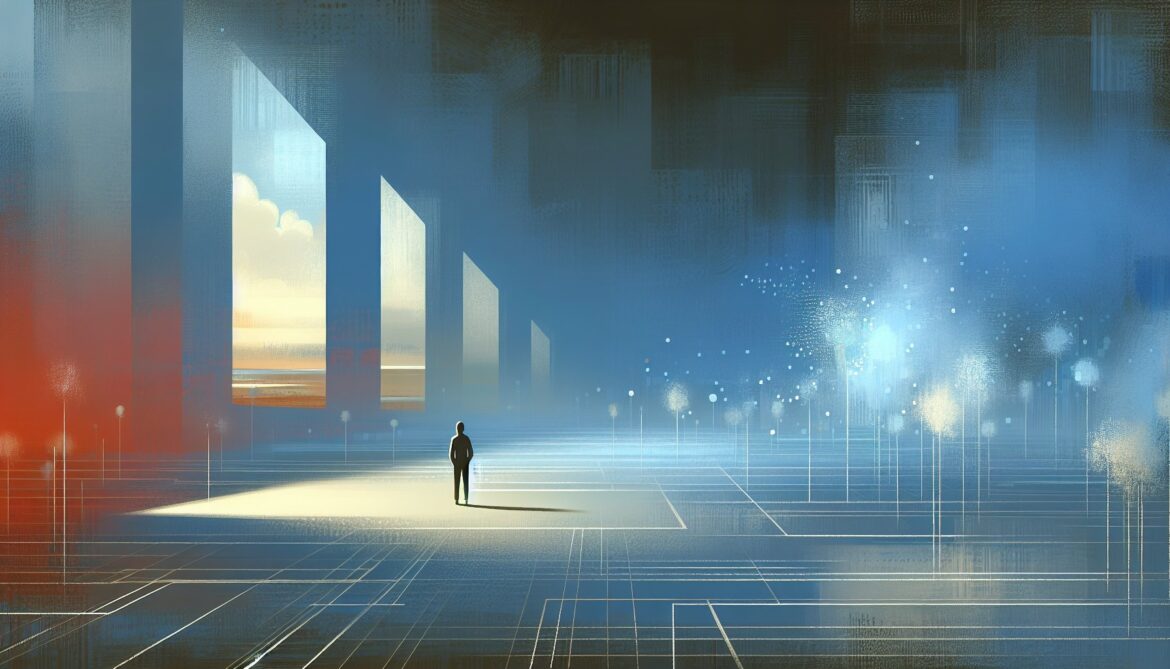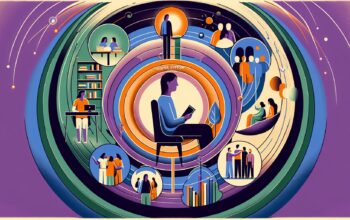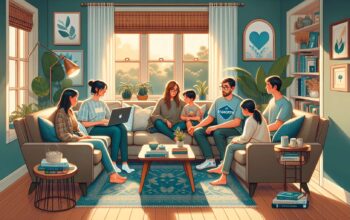It’s Thursday. Or is it Tuesday? The days blur together when every one looks the same. Wake up. Walk ten feet to your desk. Work. Walk ten feet back to bed.
You haven’t had a real conversation in three days. Just Slack messages and Zoom calls where everyone’s on mute. You can’t remember the last time someone said your name out loud.
Remote work promised freedom. Instead, it gave you isolation.
The loneliness you don’t talk about
Remote work sounds perfect on paper. No commute. Work from anywhere. Flexibility. Freedom.
But nobody mentions the isolation. The absence of casual human interaction. The days where your only human contact is a delivery person handing you food.
You don’t realize how much those office interactions mattered until they’re gone. The coffee chat. The hallway conversation. The lunch with teammates. The casual “how was your weekend?”
Now? Radio silence except for work topics. And even those feel transactional. Questions answered. Tasks assigned. Meetings ended. No lingering. No connection.
When home becomes a cage
Your apartment used to be a sanctuary. Now it’s your office, your gym, your restaurant, your everything. The walls feel closer each day.
You tell yourself you’ll go out after work. But work never really ends. And where would you go? Coffee shops full of other lonely remote workers staring at laptops?
Weekends were supposed to be different. But your friends are busy. Your partner’s working. And you’ve forgotten how to socialize outside of scheduled Zoom calls.
So you stay home. Again. The isolation compounds. Each day alone makes the next day alone feel more normal. Until one day you realize it’s been weeks since you felt truly connected to another human.
The digital disconnect
You’re on video calls all day. Talking to people. But it’s not the same as being with people.
You can’t read body language through a screen. Can’t feel the energy of a room. Can’t have those spontaneous conversations that turn into collaboration.
Everything is scheduled. Formal. On agenda. The casual interactions that built relationships and sparked ideas? Gone. Replaced by calendar invites and muted microphones.
You’re working with people you’ve never met in person. Building relationships through Slack emojis. Trying to bond over GIFs. It feels shallow because it is.
What isolation does to you
Your mental health suffers. Humans are social creatures. Prolonged isolation triggers depression. Anxiety. A sense that something is fundamentally wrong even if you can’t name it.
Your motivation crashes. Why dress up? Why shower before noon? Why maintain boundaries between work and life when they’re both happening in the same room?
Your communication skills atrophy. You’re so used to async Slack messages that real-time conversation feels awkward. You’ve forgotten how to small talk. How to be present with others.
Your perspective narrows. Without diverse interactions, you’re stuck in your own head. No different viewpoints. No casual learning from others. Just you and your echo chamber.
Your work suffers too. Innovation happens through collision of ideas. Problem-solving improves with collaboration. Neither happens easily through scheduled video calls.
Fighting back against isolation
Leave your house
Every day. Even if just for a walk. Even if you don’t want to. Especially if you don’t want to. Your brain needs environmental change. Your body needs movement. Your soul needs sunlight.
Work from a coffee shop occasionally. A library. A coworking space. Anywhere with other humans existing around you. You don’t need to interact. Just be near people.
Create structure
When days blur together, create artificial boundaries. Morning routine. Work hours. End-of-day ritual. Weekday versus weekend activities.
Change clothes for work. Even if you’re not leaving the house. The physical act signals to your brain: this is work mode. This is life mode.
Schedule social time like meetings
If you won’t do it spontaneously, schedule it. Weekly call with a friend. Monthly dinner. Regular gaming session. Whatever gets you interacting with humans.
Yes, scheduling friendship feels unnatural. But unnatural is better than isolated.
Turn cameras on
When possible, use video in meetings. See faces. Read expressions. Remember you’re working with humans, not chat bots.
Create space for non-work chat. Five minutes before the meeting starts. Virtual coffee breaks. Anything that allows casual connection.
Join communities
Find local meetups. Join online communities for your interests. Take a class. Volunteer. Join a gym. Book club. Sports league. Anything that puts you around people regularly.
Work from home doesn’t mean live in isolation. Build a life outside work that includes human connection.
Consider hybrid if possible
If your company offers it, go to the office sometimes. Not because you have to. Because humans need humans. Even introverts need occasional face-to-face interaction.
Two days a week in person might be enough to maintain connection and combat isolation. Find your balance.
For companies enabling isolation
If you manage remote teams, isolation is your problem to solve. Not your employees’.
Create intentional connection opportunities. Virtual coffee roulette. Optional coworking sessions. Team retreats. Budget for coworking spaces. Anything that facilitates human connection.
Encourage cameras on. Not mandate, encourage. Make it safe to be human on video. To have kids interrupt. To show your real environment.
Build in social time. Not everything needs to be productive. Sometimes teams need to just hang out. Chat. Be human together.
Watch for isolation warning signs. Decreased engagement. Withdrawal. People who never turn cameras on. Check in privately. Offer support.
The balance we’re still finding
Remote work isn’t inherently bad. Many people thrive with it. But it requires intentional effort to maintain human connection. And not everyone realizes that until the isolation has already set in.
The flexibility is real. The freedom is real. But so is the potential for isolation. And isolation is dangerous for mental health.
You can work remotely and stay connected. But it won’t happen automatically. You have to fight for it. Schedule it. Prioritize it. Treat it as essential as your actual work.
Because it is essential. You’re not a coding machine. You’re a human who needs other humans. Remote work can’t change that fundamental truth.
You’re not alone in feeling alone
Thousands of remote developers feel exactly what you’re feeling. The isolation. The loneliness. The sense that something’s missing even though work is getting done.
It’s not weakness. It’s not inability to handle remote work. It’s being human in a work environment that wasn’t designed for human connection.
So tomorrow, leave your house. Even for ten minutes. Call a friend. Join that meetup you’ve been considering. Turn your camera on in a meeting.
Small steps toward connection. Because the code will still be there. But you need to be okay first.
And being okay requires being with people. Even if Zoom has to be the bridge.







